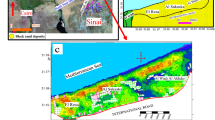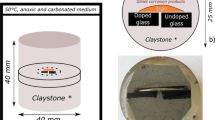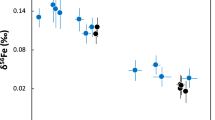Abstract
THE black iron sand from New Zealand examined by Dr. Scott in 1915 in which, as he informed the Chemical Society at its meeting on February 1, he found a substance which he is now inclined to regard as probably identical with an oxide of the new element recently discovered by Dr. Coster and Prof. Hevesy of Copenhagen, and named by them hafnium, was doubtless similar in character to the deposit observed to occur in the bed of a rivulet at Tregonwell Mill, near Menaccan, in the parish of St. Keverne, Cornwall, and also in a stream at Lenarth, in the same parish, and in which the Rev. William Gregor, the minister of that parish, who analysed the deposit in 1789, first detected the existence of the element now known as titanium.
This is a preview of subscription content, access via your institution
Access options
Subscribe to this journal
Receive 51 print issues and online access
$199.00 per year
only $3.90 per issue
Buy this article
- Purchase on Springer Link
- Instant access to full article PDF
Prices may be subject to local taxes which are calculated during checkout
Similar content being viewed by others
Author information
Authors and Affiliations
Rights and permissions
About this article
Cite this article
THORPE, T. Hafnium and Titanium. Nature 111, 252–253 (1923). https://doi.org/10.1038/111252b0
Issue Date:
DOI: https://doi.org/10.1038/111252b0
Comments
By submitting a comment you agree to abide by our Terms and Community Guidelines. If you find something abusive or that does not comply with our terms or guidelines please flag it as inappropriate.



